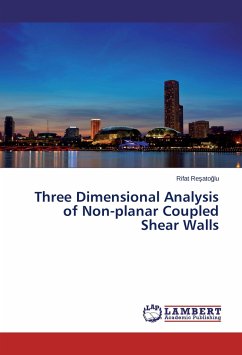Recently, a rapid increase has taken place in the number of tall buildings. In multi-storey buildings made of reinforced concrete, the lateral loads are often resisted by specially arranged shear walls. Weakening of shear walls in tall buildings by doors, windows and corridor openings is one of the most frequently encountered problems of structural engineering. In planar coupled shear wall analyses, the lateral loads are applied in such a way that the deformation of the shear wall is confined within its own plane. In this book, the Continous Connection Method (CCM) is used in conjunction with Vlasov s theory of thin-walled beams, for the three dimensional analysis of non-planar coupled shear walls subjected to lateral loads which produce combined flexural and torsional deformations. To be more general, the present book deals with non-symmetrical structures both in the formulation and in the numerical applications. Both symmetrical and asymmetrical examples have been solved by theprogram prepared in the present study and compared with the solutions found by the SAP2000 structural analysis program and a perfect match has been observed.








